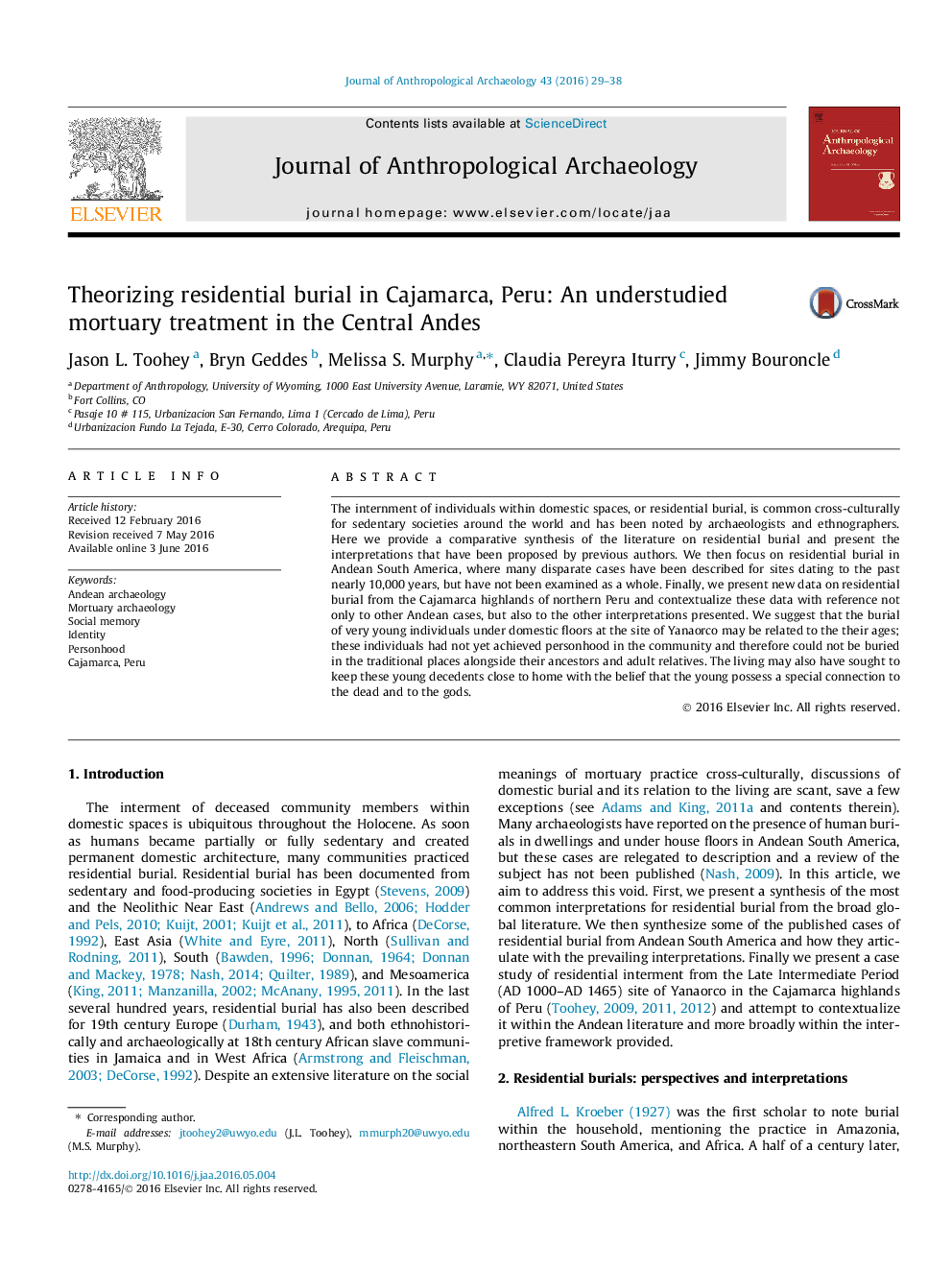| Article ID | Journal | Published Year | Pages | File Type |
|---|---|---|---|---|
| 1034846 | Journal of Anthropological Archaeology | 2016 | 10 Pages |
•We review common interpretations of residential burial.•We compare them to cases of residential burial from the Central Andes.•We detail mortuary practices and residential burial for the Cajamarca Tradition.•Residential burial at Yanaorco is interpreted to reflect a lack of personhood.
The internment of individuals within domestic spaces, or residential burial, is common cross-culturally for sedentary societies around the world and has been noted by archaeologists and ethnographers. Here we provide a comparative synthesis of the literature on residential burial and present the interpretations that have been proposed by previous authors. We then focus on residential burial in Andean South America, where many disparate cases have been described for sites dating to the past nearly 10,000 years, but have not been examined as a whole. Finally, we present new data on residential burial from the Cajamarca highlands of northern Peru and contextualize these data with reference not only to other Andean cases, but also to the other interpretations presented. We suggest that the burial of very young individuals under domestic floors at the site of Yanaorco may be related to the their ages; these individuals had not yet achieved personhood in the community and therefore could not be buried in the traditional places alongside their ancestors and adult relatives. The living may also have sought to keep these young decedents close to home with the belief that the young possess a special connection to the dead and to the gods.
